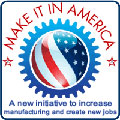Economic Crisis
HOW WE GOT HERE
As a result of financial deregulation, lenders began offering more non-traditional mortgages over the past decade (like subprime mortgages, adjustable rate mortgages, and interest-only mortgages, for example) instead of conventional 30-year fixed mortgages.
Foreign investment and Federal Reserve policies kept U.S. interest rates low for a long time. Investors looking for higher rates of return invested in real estate and in complex financial securities (called derivatives) based on packages of mortgages, including many of the riskier subprime mortgages.
At the same time, big investment banks made riskier investments, and federal regulators failed to rein them in and adequately oversee the new mortgage-backed securities.
This boom in investment in real estate drove up housing prices and created a “bubble” of unjustified and unsustainable housing prices.
When interest rates rose significantly in 2004 through 2006, many homeowners with adjustable rate mortgages couldn’t make their payments and began defaulting on their mortgages, bursting the housing bubble and pushing the prices of real estate down substantially.
The dramatic drop in the value of U.S. real estate kicked off a chain reaction of failures in the banking industry as the mortgage-backed securities they owned rapidly lost value.
This financial crisis got worse, finally threatening to bring the entire U.S. economy down last fall. Only a rapid reaction by Congress, the Administration, and the Federal Reserve prevented a complete economic meltdown, but the collapse of the housing bubble and the ensuing financial crisis precipitated the deep, painful recession that we’re trying to recover from now.
On to What Congress Has Done So Far
Back to Economic Crisis Introduction
My office may be able to help you in your dealings with federal government agencies.

 About the 14th
About the 14th






